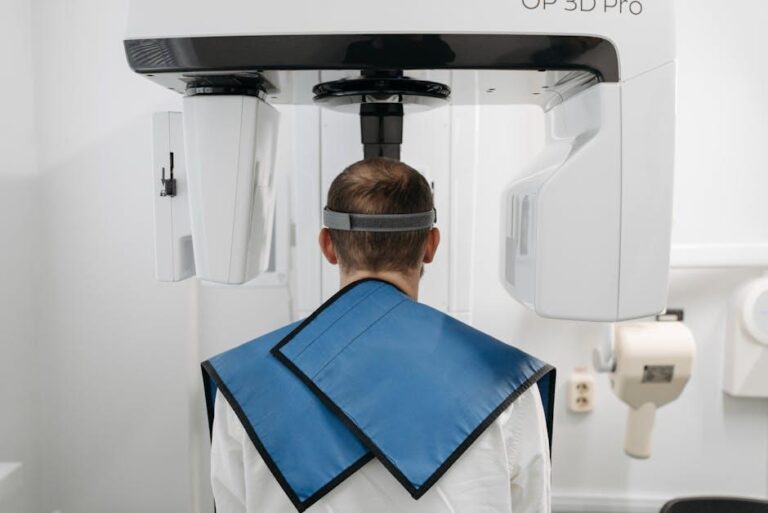
3D Scans & Future Dental Tech with Zelko Relic, Align Technology – TechInformed
The dental industry is currently undergoing a technological renaissance, driven by innovations that enhance precision, comfort, and outcomes for patients worldwide. At the heart of this transformation is 3D scanning technology, which is revolutionizing how dentists plan and deliver treatment. We sat down with Zelko Relic of Align Technology to explore what’s next in digital dentistry and how 3D scans are shaping the future of dental tech.
The Rise of 3D Scanning in Dentistry
3D scans have become a cornerstone of modern dental care, replacing traditional molds and impressions with quicker, more accurate digital models. Technologies like intraoral scanners capture detailed data of a patient’s oral cavity, enabling precise diagnosis, planning, and treatment customization.
What Makes 3D Scanning So Impactful?
- Accuracy: Digital impressions eliminate errors caused by impression materials and manual handling.
- Speed: Scanning takes minutes versus the longer timeframe for traditional molds.
- Comfort: Patients avoid uncomfortable trays and setting times.
- Efficiency: Digital files can be shared instantly with labs and specialists.
- Predictability: Enables simulations and visualization of final treatment outcomes.
Zelko Relic comments, “3D scanning technology is not just a tool; it’s a complete shift in how dental professionals approach patient care.”
Align Technology: A Pioneer in Digital Dentistry
Align Technology has been a leader in the digital dental revolution, largely due to its flagship Invisalign system and advanced scanning technologies. Zelko explains how Align’s innovations are designed with both clinicians and patients in mind — focusing on seamless integration, intuitive software, and cutting-edge hardware.
Some of Align Technology’s key focus areas include:
- Intraoral Scanners: Devices like the iTero Element scanner enable scanning with remarkable precision and ease.
- AI-driven Software: Sophisticated algorithms analyze 3D data to improve treatment planning.
- Cloud Connectivity: Allows real-time collaboration between dentists, labs, and patients worldwide.
Table: Comparison of Traditional vs. 3D Scan Processes
| Aspect | Traditional Molds | 3D Scanning (Align Technology) |
|---|---|---|
| Time to Capture Impressions | 10-15 minutes per arch | 2-3 minutes per arch |
| Patient Comfort | Uncomfortable trays and materials | Non-invasive, comfortable scanning wand |
| Data Accuracy | Subject to distortion/errors | High-precision 3D models |
| Workflow Integration | Manual shipping and delays | Instant digital sharing and processing |
Future Trends in Dental Technology with Zelko Relic
Looking ahead, Zelko Relic shares insights into exciting trends that will further transform dental care in the coming years:
1. Enhanced AI & Machine Learning
Artificial intelligence will continue to evolve in diagnostics, treatment simulation, and outcome predictions, automating many aspects of dental workflows without compromising quality.
2. Augmented Reality (AR) in Treatment Planning
AR will allow dentists to overlay 3D scans on real-time patient images, providing immersive visualizations that improve precision during procedures.
3. Integration of 3D Printing and Scanning
Seamless coupling of scanning data with 3D printers will speed up fabrication of custom crowns, aligners, and prosthetics with minimal human intervention.
4. Patient-Centered Tech Experiences
From app-based treatment monitoring to virtual consultations, digital patient engagement will become increasingly sophisticated to boost satisfaction and compliance.
Benefits & Practical Tips for Embracing 3D Scans in Your Dental Practice
Implementing advanced 3D scanning technologies comes with a host of benefits beyond the obvious patient comfort and accuracy improvements. Here’s a quick overview:
- Reduced Chair Time: Streamlined scans mean more patient appointments per day.
- Minimized Retakes: Fewer impression errors translate to less repetition and material waste.
- Improved Case Acceptance: Visual 3D models help patients understand their treatment better, increasing approval.
- Digital Records Management: Organized and accessible patient files enhance long-term care decisions.
To maximize success when integrating 3D scan systems, Zelko recommends:
- Investing in comprehensive team training to optimize scanner use.
- Establishing protocols for digital file management and secure data transfer.
- Partnering with Align’s customer support for ongoing technical guidance.
Case Study: Improving Orthodontic Outcomes with 3D Scans
One dental office shared their experience in adopting Align’s iTero 3D scanner. Key highlights included:
- Scan-to-Delivery Time reduced by 30%, accelerating Invisalign aligner fabrications.
- Patient Comfort greatly enhanced, with positive feedback on the painless, clean scanning process.
- Enhanced Diagnostic Capabilities — enabling more precise treatment plans and fewer mid-course adjustments.
As a result, the practice reported higher patient satisfaction and increased referral rates.
Conclusion: A New Era of Dentistry is Here
The fusion of 3D scanning and cutting-edge dental technology is driving transformational change in oral healthcare. Thanks to pioneers like Zelko Relic and Align Technology, dentists can now deliver faster, more accurate, and highly personalized treatment plans that benefit both practitioners and patients.
Embracing these innovations not only improves daily practice workflows but also sets the stage for continuous advancements like AI, AR, and 3D printing integration. For dental professionals eager to stay ahead, adopting 3D scanning tools today is an investment in the future of dentistry.
Stay informed, stay innovative, and join the digital dental revolution with TechInformed.


